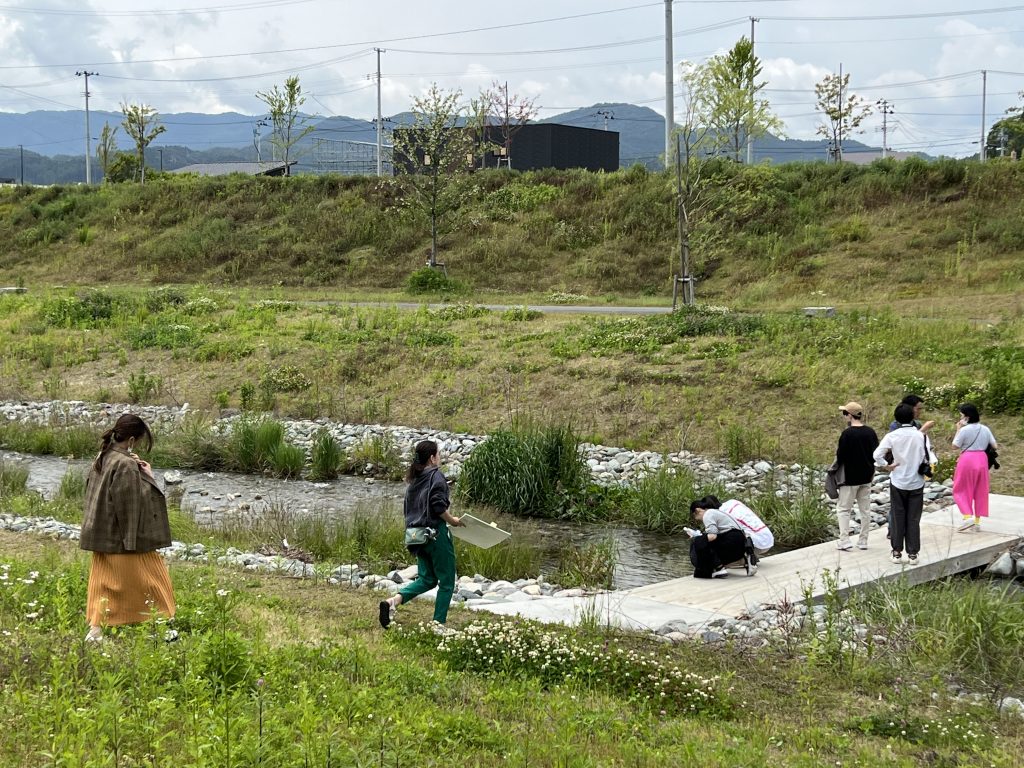20221214
Rikuzentakata, Iwate 12, June, 2022

The bank of the Kawara River near the Rikuzentakata heightened ground level area. The embankment is covered with greenery, creating a water-friendly space.
Mr. Nagayama from Rikuzentakada City Office showed us around. Here we heard about the administrative reconstruction projects in Takada-cho and Imaizumi-cho, such as land use improvement and river environment management systems. He walked us through the entire town to show us the issues and projects that have been initiated so far.
One of the major issues facing the entire city as it recovers from the earthquake is how to utilize the raised land. In many cases, the raising of the land did not proceed smoothly, and people had to relocate voluntarily. In addition, the current situation in the areas that have been relocated to higher ground is progressing with an emphasis on connections among people, and each new area is also working with an awareness of its old community.
There are still many issues to be addressed in Rikuzentakata, but there are also many new initiatives in the works. We were able to learn more about the reconstruction projects that the local people and the government are working on together, such as the museum that will open this fall, the pecan nut cultivation that has started, and the Minna no Ie (Everyone’s House) project.
After lunch at Michi no Eki Takada Matsubara, we visited the Rias Ark Museum of Art and the Ruins of the Great East Japan Earthquake Kesennuma City Memorial Museum. Seeing the damaged objects and remains of the disaster more than 10 years after the earthquake, we were keenly aware of how important it is to keep telling stories and engraving them in people’s memories.
Seeing the scenes that we had seen on the other side of the TV on March 11, 2011, still in front of my eyes, made me realize the necessity of viewing disasters from various perspectives, including the threat of natural disasters that took many lives and the challenges they pose.